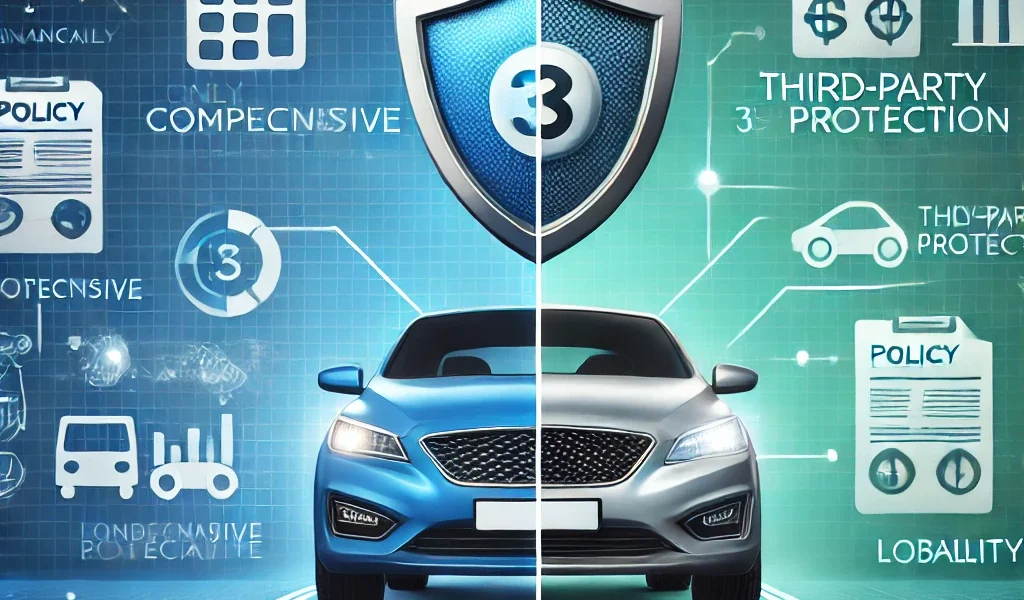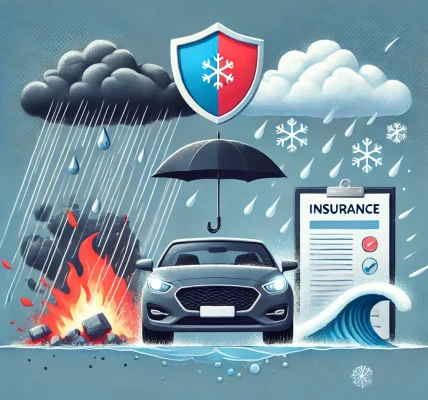Understanding the Differences Between Comprehensive and Third-Party Car Insurance – A DIY Guide
Car insurance is a crucial aspect of responsible vehicle ownership, ensuring financial protection against unforeseen accidents, damages, and liabilities. However, choosing the right type of car insurance can be confusing, especially when deciding between Comprehensive Insurance and Third-Party Insurance.
Both types of policies offer protection, but they differ significantly in terms of coverage, cost, and benefits. This DIY guide will help you understand the key differences between comprehensive and third-party car insurance, enabling you to make an informed decision that best suits your needs.
1. What is Comprehensive Car Insurance?
Comprehensive car insurance is an all-inclusive policy that covers both damage to your vehicle and liabilities toward third parties. It provides financial protection against accidents, theft, natural disasters, fire, vandalism, and more.
Key Features of Comprehensive Car Insurance:
- Covers damages to your car due to accidents, fire, natural calamities, and theft.
- Includes third-party liability coverage.
- Provides compensation if your car is stolen.
- Covers damages caused by riots, vandalism, or malicious acts.
- Offers optional add-ons like roadside assistance, zero depreciation cover, and engine protection.
- Higher premium compared to third-party insurance.
Pros of Comprehensive Car Insurance:
✅ Covers both own-damage and third-party liabilities. ✅ Financial protection against natural disasters and theft. ✅ Peace of mind knowing your car is fully covered. ✅ Option to add extra benefits.
Cons of Comprehensive Car Insurance:
❌ Higher premium costs compared to third-party insurance. ❌ May not be necessary for older or low-value vehicles.
2. What is Third-Party Car Insurance?
Third-party car insurance is the most basic and legally required type of car insurance in many countries. It covers financial liabilities for damages or injuries caused to others but does not cover any damage to your own vehicle.
Key Features of Third-Party Car Insurance:
- Covers damages and injuries caused to another person, vehicle, or property.
- Mandatory by law in most regions.
- Does NOT cover damages to your own car.
- More affordable than comprehensive insurance.
Pros of Third-Party Car Insurance:
✅ Legally required, ensuring compliance with traffic laws. ✅ Lower premium costs, making it budget-friendly. ✅ Provides financial protection against third-party claims.
Cons of Third-Party Car Insurance:
❌ No coverage for damages to your own car. ❌ No protection against natural disasters, theft, or vandalism. ❌ Higher out-of-pocket expenses if your car gets damaged.
3. Key Differences Between Comprehensive and Third-Party Insurance
| Feature | Comprehensive Insurance | Third-Party Insurance |
|---|---|---|
| Coverage | Own vehicle + third-party damages | Only third-party damages |
| Premium Cost | Higher | Lower |
| Legal Requirement | Not mandatory | Mandatory in most countries |
| Theft Protection | Yes | No |
| Fire/Natural Disaster Coverage | Yes | No |
| Customization (Add-ons) | Available | Not available |
| Best For | New and expensive cars | Old or low-value cars |
4. Which One Should You Choose?
Choose Comprehensive Car Insurance if:
- Your car is new or expensive.
- You want full financial protection against theft, accidents, and natural disasters.
- You frequently drive in high-risk areas.
- You want flexibility with add-ons and better coverage.
Choose Third-Party Car Insurance if:
- You have an old or low-value car.
- You are looking for a budget-friendly policy.
- You only need minimal coverage to meet legal requirements.
- You are willing to bear the cost of repairing your own vehicle in case of damage.
5. Cost Comparison: Comprehensive vs. Third-Party Insurance
Insurance premiums vary based on factors like vehicle type, location, and driver history. Here’s a general cost comparison:
- Third-Party Insurance: Usually 50-70% cheaper than comprehensive insurance.
- Comprehensive Insurance: Costs more due to wider coverage but provides better financial security.
To find the best rate, compare quotes from multiple insurance providers and consider your vehicle’s value before making a decision.
6. How to Reduce Car Insurance Premiums
Regardless of the type of insurance you choose, here are some ways to lower your premium costs:
✅ Increase Your Deductible – Opting for a higher deductible reduces your premium but increases out-of-pocket expenses in case of a claim. ✅ Bundle Policies – Combining auto insurance with home or other policies can provide discounts. ✅ Maintain a Good Driving Record – Safe drivers get lower insurance rates. ✅ Install Anti-Theft Devices – Security features like GPS trackers or alarms can lead to discounts. ✅ Avoid Small Claims – Filing fewer claims can prevent premium hikes. ✅ Look for Discounts – Many insurers offer discounts for good drivers, students, and low-mileage users.
7. Common Myths About Car Insurance
❌ Myth 1: Third-Party Insurance Covers My Car’s Damage
✅ Truth: Third-party insurance only covers damages caused to others, not your own car.
❌ Myth 2: Comprehensive Insurance Covers Everything
✅ Truth: While it offers extensive coverage, certain damages may require add-ons, such as zero depreciation cover.
❌ Myth 3: Comprehensive Insurance is Too Expensive
✅ Truth: While it has a higher premium, the financial protection it provides often outweighs the cost, especially for new or expensive vehicles.
❌ Myth 4: If My Car is Stolen, Third-Party Insurance Will Cover It
✅ Truth: Third-party insurance does not cover theft. Only comprehensive insurance offers theft protection.
8. Final Verdict: Which Insurance is Right for You?
- If you own a new, expensive, or financed vehicle, comprehensive insurance is highly recommended.
- If you own an older or low-value vehicle, third-party insurance is a cost-effective choice to meet legal requirements.
- If you want peace of mind and full coverage, comprehensive insurance is worth the investment.
Conclusion
Choosing between comprehensive and third-party car insurance depends on your vehicle’s value, budget, and coverage needs. While comprehensive insurance provides extensive protection, third-party insurance is an affordable option to meet legal requirements.
By evaluating your driving habits, car condition, and financial situation, you can make the best decision for your needs. No matter which type of insurance you choose, always compare multiple providers and read the policy details carefully to ensure you get the best coverage at the right price.
By following this DIY guide, you can confidently select the right car insurance policy and drive worry-free!



